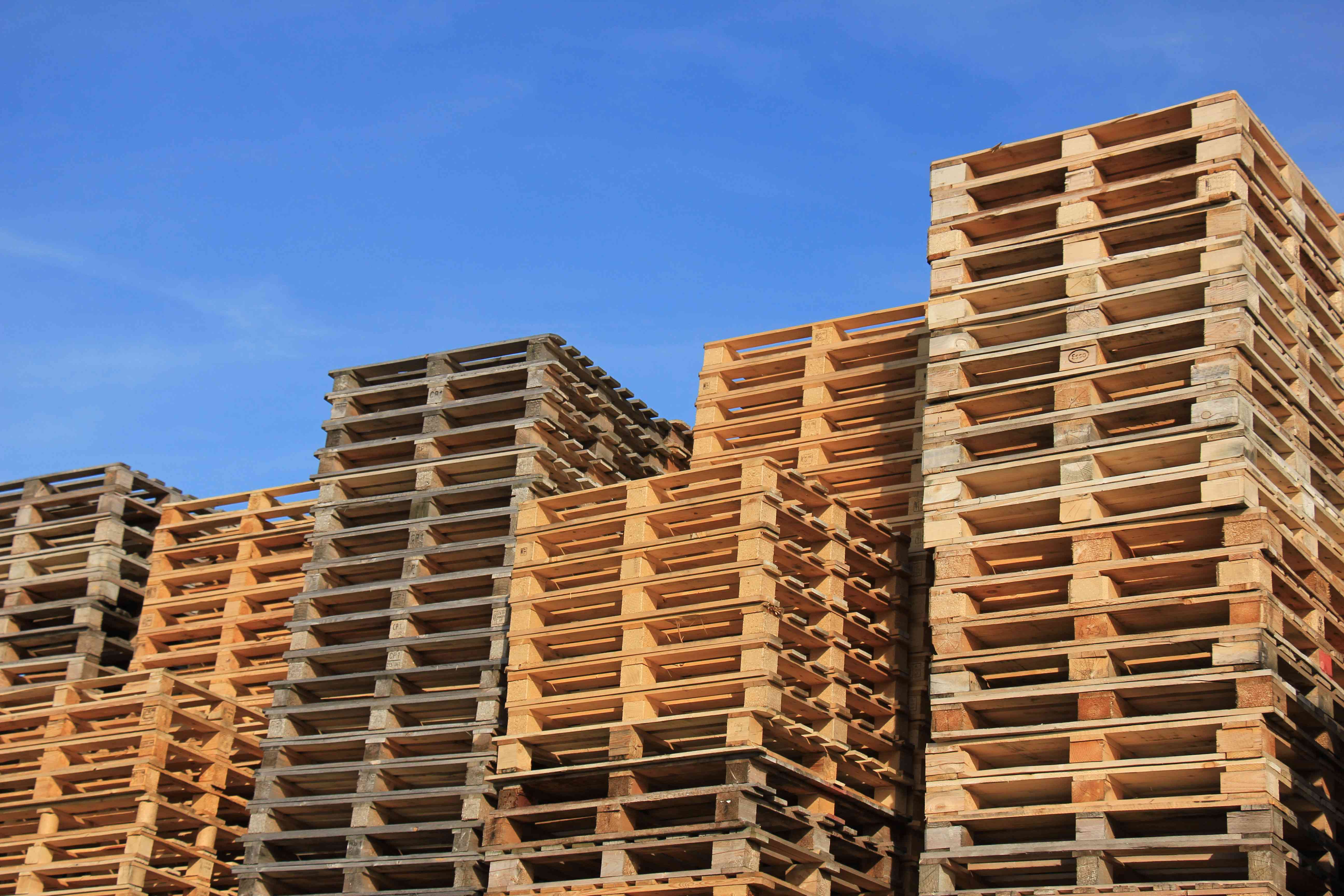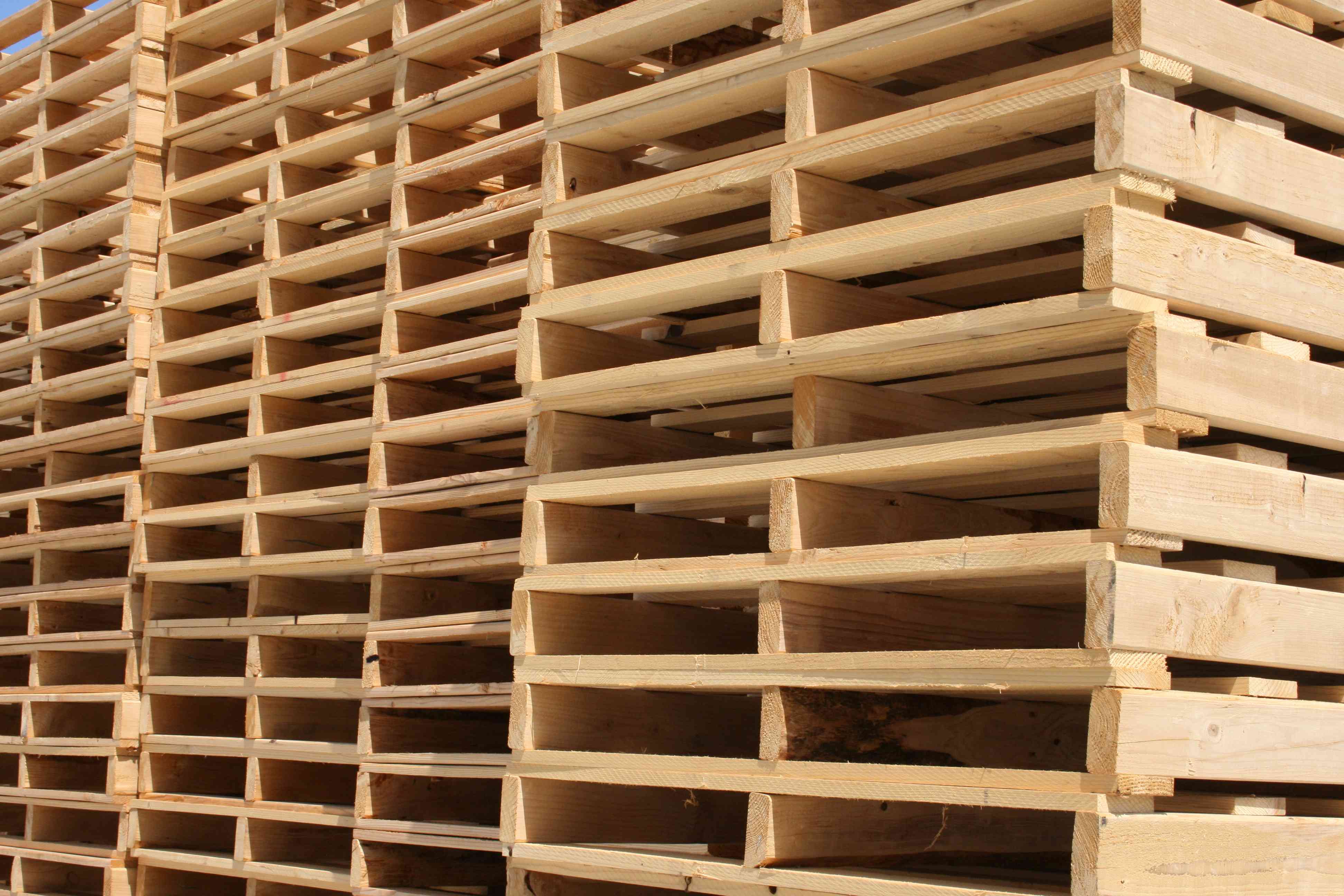48" x 40" Wood Pallets For Sale Near Me
Shop All 48" x 40" Wood Pallets

The Standard U.S. Pallet Size
The 48" × 40" wood pallet is the most commonly used pallet size in the U.S. It’s widely adopted across industries due to its compatibility with standard racking, forklifts, and transport systems. While often associated with the GMA (Grocery Manufacturers Association) standard, not all 48×40 pallets follow GMA specifications—this size is available in various styles and builds to suit different needs.
Construction & Specifications
Below is a quick-reference table outlining the most common specifications for 48” x 40” wood pallets. These values represent typical ranges across new and used pallets and may vary depending on construction style, materials, and supplier.
| Feature | Details |
|---|---|
| Dimensions | 48" (length) × 40" (width) × ~5.5"–6" (height) |
| Material | Hardwood, softwood, or mixed lumber |
| Pallet Type | Stringer, GMA, block , or skid |
| Entry Type | 4-way or 2-way |
| Feature | Details |
|---|---|
| Weight | ~35–50 lbs |
| Static Load Capacity | ~2,500–6,000 lbs |
| Dynamic Load Capacity | ~1,500–3,000 lbs |
| Racking Load Capacity | ~1,000–2,200 lbs |
New vs. Used
When choosing 48" × 40" pallets, businesses typically consider three main options:
- New Pallets
- Built from all-new lumber to meet exact specs
- Ideal for heavy-duty use, food-grade products, or export (especially when heat-treated)
- Most consistent in strength and appearance
- Used Pallets
- Recovered from previous use and sorted by repair grade (e.g., A or B)
- More affordable and eco-friendly
- Suitable for many warehousing and one-way shipping applications
- Remanufactured Pallets
- Assembled from a mix of recycled and new lumber
- Offer a middle ground between cost and consistency
- Useful when specific dimensions or quality standards are needed at a lower price point
Your selection should align with load requirements, handling conditions, and budget—especially if pallets are used in automation or export scenarios.

Common Industry Uses
The 48" × 40" pallet is the go-to choice across U.S. industries due to its standardized footprint and handling efficiency:
- Grocery & Food Distribution
- Originated as the GMA standard for shipping packaged foods and beverages
- Still widely used in grocery and cold chain logistics
- Retail & Consumer Goods
- Preferred size for big-box retailers and distribution centers
- Fits standard racking and automated systems
- Manufacturing & Industrial
- Used for transporting parts, packaging, and finished goods
- Suitable for heavy loads and durable enough for reuse
- Warehousing & Third-Party Logistics
- Enables fast cross-docking, bulk storage, and outbound shipping
- Standardized size supports pallet exchange and pooled systems
This wide applicability makes 48" × 40" pallets a versatile solution for most B2B shipping and storage needs.
48" x 40" Pallet Styles
Block pallets: Use solid wood blocks to support the top deck, enabling true four-way entry (forklifts and pallet jacks can lift from any side). A 48×40 block pallet is prized for strength.
Stringer pallets: Use three parallel boards (“stringers”) for support. This is the prevalent pallet design in the U.S., and 48×40 is its most common size.
Skids: Pallets without a bottom deck (“single-faced”). A 48×40 skid’s open-bottom design makes it lighter and cheaper but also less durable, with only two-way forklift entry.
GMA pallets: The Grocery Manufacturers Association’s standard pallet is a 48×40 stringer design with notched stringers (partial four-way entry), used widely for many consumer products.

